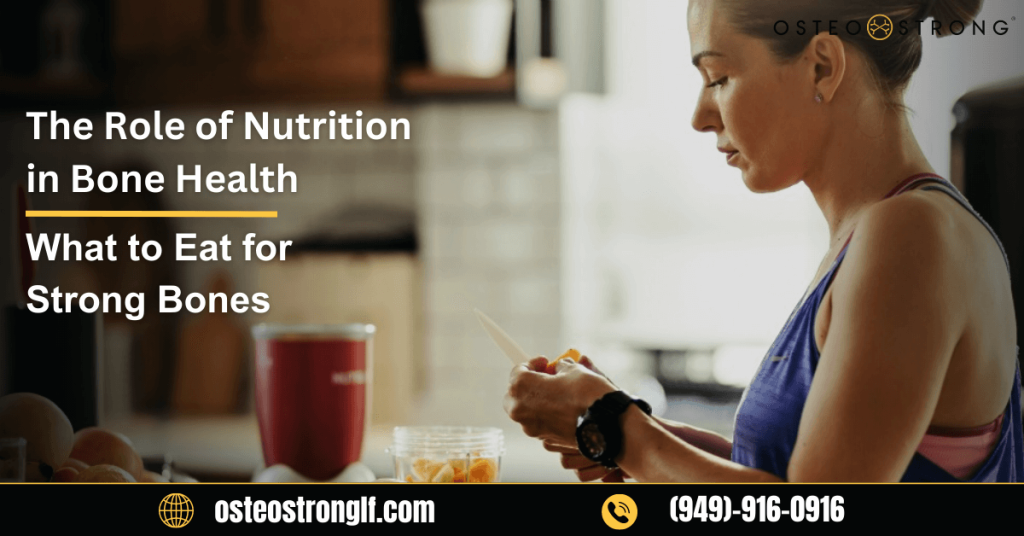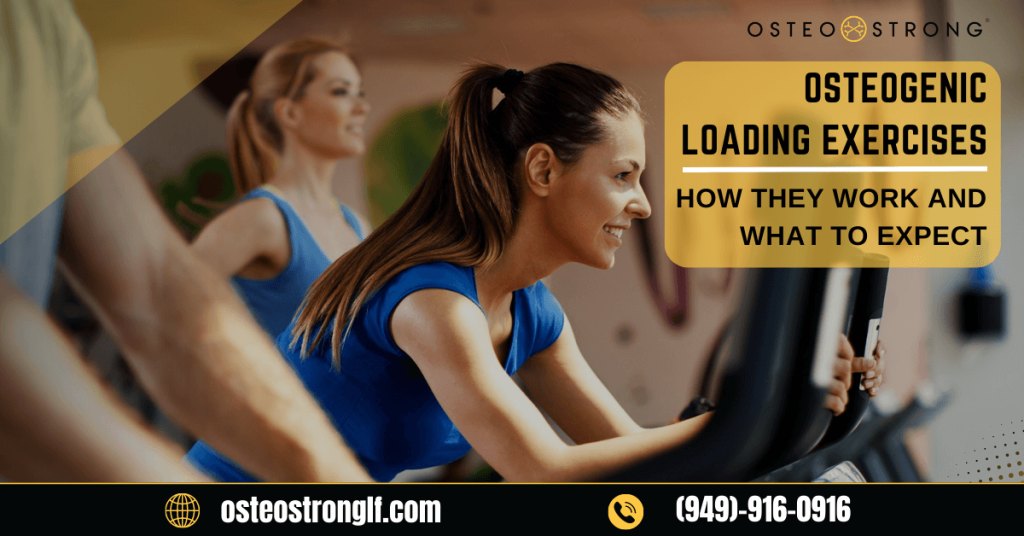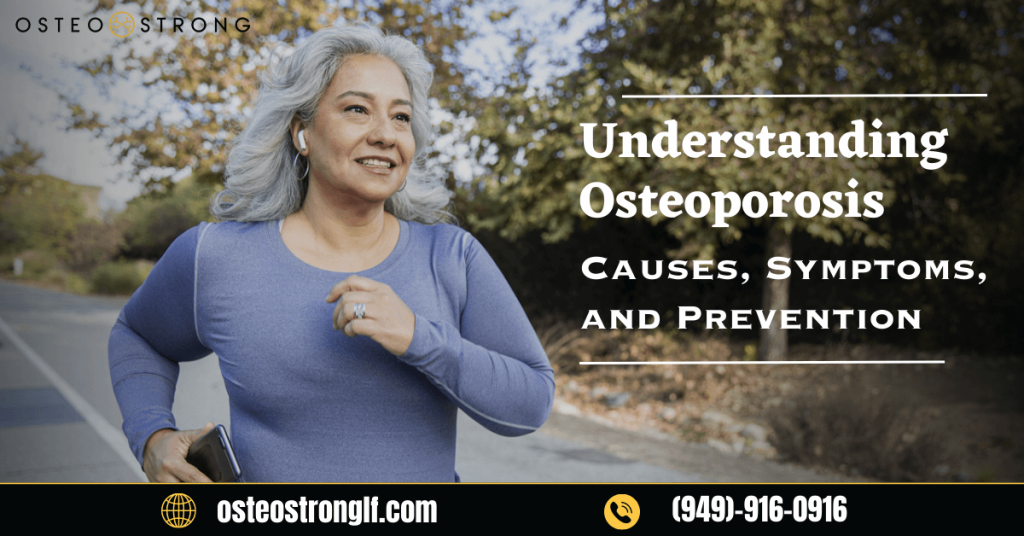
When it comes to maintaining good overall health, we often focus on factors like exercise and sleep, but we may overlook the critical role of nutrition in keeping our bodies strong. One area where nutrition plays a vital role is bone health.
Strong bones are essential for mobility, balance, and preventing conditions like osteoporosis. In this blog post, we will explore the importance of nutrition in maintaining strong bones and discuss the key foods that can promote optimal bone health. So, let’s dive in and discover what you should eat to keep your bones strong and healthy!
Bone Health – The Strength that Starts Within
Before we delve into the role of nutrition, it’s essential to understand the basics of bone health. Bones are living tissues that undergo a constant process of renewal. They are primarily composed of collagen, a protein that provides a framework for bone mineralization. The two key minerals involved in bone health are calcium and phosphorus. Calcium is responsible for maintaining bone strength, while phosphorus supports energy metabolism and the formation of new bone cells.
Throughout our lives, bones continuously undergo a process called remodeling, where old bone tissue is broken down and replaced by new bone tissue. During childhood and adolescence, bone formation outpaces bone breakdown, leading to increased bone density. However, as we age, bone breakdown may start to exceed formation, resulting in a loss of bone density and strength.
How Nutrition Can Impact Bone Health
Before we delve into the specifics of nutrition, let’s briefly understand the basics of bone health. Our bones are composed of a complex matrix of minerals, primarily calcium, and phosphorus, along with collagen and other proteins. Throughout our lives, our bones undergo a continuous process of remodeling, where old bone tissue is broken down and new bone tissue is formed. This dynamic process requires a steady supply of essential nutrients to support bone growth and repair.
A well-balanced diet plays a crucial role in maintaining bone health. It provides the necessary nutrients for optimal bone formation and maintenance. With that in mind, here are some key nutrients that significantly impact bone health:
- Calcium: Calcium is undoubtedly the most well-known nutrient associated with bone health. It plays a crucial role in maintaining bone density and strength. Insufficient calcium intake can lead to a higher risk of fractures and conditions such as osteoporosis. Excellent sources of calcium include dairy products like milk, yogurt, and cheese. If you follow a plant-based diet, you can opt for calcium-fortified alternatives such as soy milk, almond milk, and leafy greens like kale and broccoli..
- Vitamin D: While calcium is essential, its absorption and utilization in the body are greatly influenced by vitamin D. This vitamin aids in the absorption of calcium from the intestines and promotes its incorporation into bone tissue. Natural sources of vitamin D include sunlight exposure, fatty fish like salmon and mackerel, egg yolks, and fortified foods such as cereals and dairy products. If you struggle to get enough sunlight or have limited dietary sources of vitamin D, consult your healthcare provider about potential supplementation.
- Magnesium: Often overshadowed by calcium and vitamin D, magnesium is a vital mineral for bone health. It helps regulate calcium metabolism, stimulates the production of calcitonin (a hormone that preserves bone), and enhances vitamin D activity. Include magnesium-rich foods in your diet, such as nuts, seeds, whole grains, legumes, and leafy green vegetables like spinach.
- Vitamin K: Vitamin K is involved in the production of specific proteins that regulate calcium levels in the body. It helps ensure that calcium is deposited in bones rather than soft tissues, reducing the risk of arterial calcification. Leafy green vegetables such as kale, spinach, and Brussels sprouts, as well as fermented foods like sauerkraut, are excellent sources of vitamin K.
- Protein: Protein is a vital component of bone tissue and is necessary for bone formation and repair. Include lean meats, poultry, fish, eggs, dairy products, legumes, and plant-based protein sources like tofu and tempeh to meet your protein requirements. Aim for a balanced intake of protein throughout the day to support optimal bone health.
Eating The for Right Foods for Stronger Bones
Now that we’ve covered the important nutrients, let’s explore some bone-friendly foods that you can incorporate into your diet:
Dairy Products
Leafy Green Vegetables
Fatty Fish
Fortified Foods
Nuts and Seeds
Beans and Legumes
Whole Grains
Colorful Fruits
Strengthening Your Future with Osteostrong!
Maintaining strong and healthy bones is crucial for our overall well-being. While exercise and other lifestyle factors are important, nutrition plays a fundamental role in supporting optimal bone health. By incorporating calcium-rich foods like dairy products, leafy green vegetables, and fortified foods, along with essential nutrients like vitamin D, magnesium, and vitamin K, you can provide your bones with the nourishment they need.
So, make smart choices when it comes to your diet and invest in the long-term health of your bones. Remember, prevention is key, so start nourishing your bones today for a stronger and healthier future!
What are you waiting for? Schedule your session today!

As we age, maintaining strong and healthy bones becomes increasingly important. However, finding moments of tranquility and inner peace can seem like an elusive goal. The constant demands of work, relationships, and technology can leave us feeling overwhelmed and disconnected from ourselves.
However, osteogenic loading exercises are one effective way to improve bone density and reduce the risk factors of osteoporosis. These specialized exercises stimulate the body’s natural bone-building processes, leading to stronger bones and better overall health. In this article, we will explore how osteogenic loading exercises work and what you can expect from adding them to your daily routine.
Osteogenic Loading – What Is It and How Does It Help?
Osteogenic loading exercises involve subjecting the bones to brief but intense bursts of mechanical loading. The goal is to stimulate the osteoblasts, the cells responsible for building new bone tissue, into action. By applying a controlled level of stress to the bones, these exercises prompt the body to strengthen and rebuild bone density, resulting in stronger and healthier bones over time.
Furthermore, osteogenic loading exercises take advantage of this natural remodeling process by applying a specific amount of force to the skeletal system. This force is greater than what the bones typically experience during everyday activities, prompting the body to respond by increasing bone mass and density. By consistently challenging the bones through targeted exercises, individuals can stimulate bone growth and reduce the risk of fractures and osteoporosis.
The Healthy Benefits of Osteogenic Loading Exercises
Increased Bone Density
Enhanced Muscle Strength
Improved Balance and Coordination
Boosted Metabolism and Weight Management
What to Expect from Osteogenic Loading Exercises:
- Safety Considerations: Before starting any new session, it is essential to consult with a healthcare professional or qualified trainer. They can assess your current bone health and provide guidance on the most appropriate exercises for your needs. However, OsteoStrong’s osteogenic loading exercises are generally safe and effective when performed correctly, but it’s crucial to receive proper instruction to prevent injuries.
- Specialized Equipment: Osteogenic loading exercises often require specialized equipment designed to apply the necessary forces to stimulate bone growth while minimizing the risk of injury. Examples of such equipment include the OsteoStrong machines or Whole-Body Vibration platforms. Specialists will guide you on how to use the equipment safely and effectively, ensuring that you get the most out of your workouts.
- Short and Intense Sessions: Osteogenic loading exercises are typically brief but intense. Each session typically lasts around 10 minutes, focusing on targeting specific areas of the body that benefit from increased bone strength and density. These exercises are designed to provide the optimal stimulus for bone growth in a concentrated period.
- Minimal Impact on Joint Health: One significant advantage of osteogenic loading exercises is that they place minimal stress on the joints. This makes them suitable for individuals with joint pain or limitations. The controlled movements and specialized equipment allow for safe and effective bone-loading without excessive strain on the joints, reducing the risk of injury.
- Progressive Overload: Like any exercise program, osteogenic loading exercises rely on the principle of progressive overload. Initially, the forces applied to the bones may be lower, gradually increasing as your bones adapt and grow stronger. This progressive increase in load ensures that you continue to stimulate bone growth and maximize the benefits of these exercises. A trained professional can guide you through the process of gradually challenging your bones to achieve optimal results.
- Long-Term Commitment: Osteogenic loading exercises are most effective when incorporated into a long-term fitness routine. Consistency is key, and regular sessions over several months or years can yield significant improvements in bone health. It’s important to integrate these exercises with other weight-bearing activities like walking, jogging, or dancing to further enhance overall bone strength.
- Personalized Approach:Every individual’s bone health is unique, and what works best for one person may not be as effective for another. It’s crucial to tailor osteogenic loading exercises to your specific needs and goals. Working with a trained professional will ensure that you are performing the right exercises with the correct technique and intensity for your body.
Osteostrong – Building healthy bones for a better tomorrow.
Prioritizing bone health is vital for maintaining an active and independent lifestyle, especially as we age. With Osteostrong’s osteogenic loading exercises, they offer a specialized form of resistance training that focuses on improving bone strength and density. By understanding the science behind these exercises and incorporating them into a personalized fitness routine, individuals can expect to see significant improvements in their bone health over time.
Embrace the opportunity to invest in your bone health and enjoy the benefits of a stronger skeletal system that supports your overall well-being for years to come – get your free session today with Osteostrong!

Osteoporosis is a disease that weakens bones and makes them more susceptible to fractures. It’s a common condition that affects millions of people around the world, particularly women. Osteoporosis is often referred to as a silent disease, as it can develop slowly over time, without any noticeable symptoms until a bone is fractured.
In this article, we’ll take a closer look at what osteoporosis is, its causes, symptoms, and most importantly, how to prevent it.
Understanding The “Silent Disease”
Osteoporosis, also known as the “silent disease,” is a condition in which bones become weak and fragile, making them more prone to fractures. It happens when the body loses too much bone or makes too little bone, or even both.
Bones are living tissues that are constantly being broken down and rebuilt. In healthy individuals, new bone is produced faster than old bone is broken down. However, in those with osteoporosis, bone loss occurs faster than new bone growth. And it almost always happens to people over the age of 50.
What Causes Osteoporosis?
There are several risk factors that can increase the likelihood of developing osteoporosis, including:
Age
Family History
Hormone Levels
Certain Medical Conditions
Certain Medicines
Osteoporosis Symptoms That You Should Look Out For
- Back pain: Osteoporosis can cause a gradual compression of the spinal vertebrae, leading to chronic back pain.
- Loss of height: Osteoporosis can cause the vertebrae to collapse or compress, resulting in a loss of height over time.
- Stooped posture: When the bones in the spine weaken, it can cause a curvature of the spine, resulting in a stooped posture.
- Bone fractures: People with osteoporosis are more likely to suffer bone fractures, especially in the hip, wrist, or spine. These fractures can occur with minimal trauma, such as a fall or a minor bump.
- Weak and brittle nails: Osteoporosis can also cause changes in the nails, making them weak and brittle.
- Tooth loss: Osteoporosis can lead to tooth loss, as the bones supporting the teeth can weaken and shrink.
- Decreased grip strength: Osteoporosis can cause a decrease in grip strength, making it difficult to perform daily activities.
Prevention Is Better Than Cure
Even though you have a high chance of developing osteoporosis as you grow older, there are several things you can do to help prevent it or reduce your risk of developing it. Fortunately for you, here are some of the best ways to prevent osteoporosis:
Get Enough Calcium and Vitamin D
Limit Alcohol Intake
Quit Smoking
Getting A Test for Your Bone Density
Getting Engaged with Weight-Bearing Exercises
Visiting Your Nearest Osteostrong Health and Wellness Center
Keep Your Bones In Tip-Top Shape with Osteostrong’s Care
Even though osteoporosis is a common condition that can develop slowly over time, there are several things you can do to help prevent it. By taking note of the prevention tips listed above, you can help protect your bone health and reduce the risk of osteoporosis as you grow older. So, what are you waiting for? Invest in your bone health today – it’s worth it!
Join the Osteostrong community and start achieving your health and fitness goals today!

